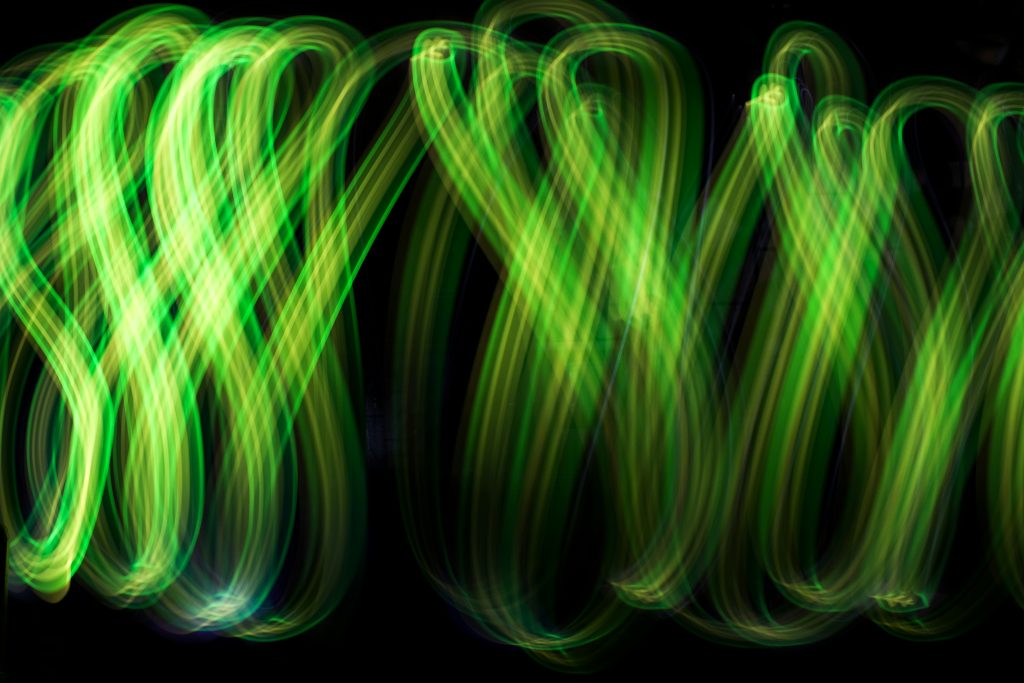In this article, we will explore different lacing techniques that can help you achieve an optimal fit for your shoes while reducing the risk of injuries. By properly lacing your shoes, you can ensure that they snugly hug your feet, providing the necessary support and stability for various activities. Whether you are an athlete looking to enhance performance or someone who simply wants to improve comfort during everyday wear, this article will guide you through the different lacing techniques that can make a significant difference in your footwear experience. So grab your shoes and let’s discover the art of lacing!

Importance of Proper Lacing Techniques
Enhances Fit and Comfort
Proper lacing techniques play a crucial role in enhancing the fit and comfort of your shoes. The way you lace your shoes can determine how they conform to your feet and provide a snug and secure fit. By using the right lacing technique, you can ensure that your shoes are not too loose or too tight, preventing discomfort and irritation during activities or long walks. A well-fitted shoe can make all the difference in your overall comfort and enjoyment, whether you’re engaging in sports or simply going about your daily routine.
Reduces Foot Slippage
One of the most common problems people face with ill-fitting shoes is foot slippage. When your feet constantly slide inside the shoes, it can lead to numerous issues such as blisters, calluses, and even injuries. Proper lacing techniques can help reduce foot slippage by providing a secure and snug fit. By tightening the laces appropriately, you can prevent your feet from moving excessively within the shoes, allowing for a more stable and controlled stride.
Prevents Blisters and Hotspots
Blisters and hotspots are a hiker’s worst nightmare, and they can also be a nuisance during other physical activities. These painful skin irritations can occur due to friction between your feet and the shoes, often caused by improper lacing. By using specific lacing techniques, such as those that distribute pressure evenly or create additional padding, you can significantly reduce the risk of blisters and hotspots. Taking the time to learn and implement proper lacing techniques can save you from the agony of dealing with painful foot ailments.
Improves Stability and Support
Proper lacing can greatly improve the stability and support provided by your shoes. Whether you’re navigating rough terrains, engaging in high-impact sports, or simply walking around town, having stable and supportive footwear is essential. Choosing the right lacing technique can help distribute pressure evenly, secure your feet in place, and provide the necessary support for your arches and ankles. This improved stability and support can enhance your performance, reduce the risk of injuries, and keep you comfortable throughout your activities.
Common Lacing Techniques
Criss-Cross Lacing
The criss-cross lacing technique is one of the most basic and widely used methods. It involves lacing the shoelaces in a diagonal pattern, crossing them over each other to create a secure fit. This technique is suitable for most foot shapes and provides an evenly distributed lacing pattern.
Straight Bar Lacing
Straight bar lacing is a simple yet effective technique that creates a clean and symmetrical look. It involves lacing the shoelaces horizontally across the eyelets, creating a straight bar-like appearance. This technique is particularly useful for people with high arches or those looking for a snug fit around the instep.
Loop Lacing
Loop lacing is a versatile technique that can be used to reduce pressure points and provide extra support in specific areas. It involves creating loops with the laces and threading them through other loops, creating a customizable lacing pattern. This technique is helpful for people with wider forefoot or those experiencing discomfort on the top of their feet.
Box Lacing
Box lacing, also known as parallel lacing, involves lacing the shoelaces vertically through the eyelets, creating a box-like pattern. This technique can help relieve pressure on the top of the foot and provide a more secure fit. It is particularly useful for people with narrow heels or those seeking additional stability.
Ladder Lacing
Ladder lacing is a unique technique that involves weaving the laces through the eyelets in a ladder-like pattern. This technique allows for customization and can be used to relieve pressure on specific areas or address foot issues such as instability or pronation. Ladder lacing provides excellent support and is commonly used by athletes and runners.
Lacing Techniques for Specific Foot Issues
High Arches
Individuals with high arches often face challenges in finding shoes that provide adequate support and a comfortable fit. For high arches, utilizing lacing techniques that create a snug fit and distribute pressure evenly is crucial. Techniques such as straight bar lacing or loop lacing can help secure the midfoot and reduce any potential slippage or discomfort.
Wide Forefoot
If you have a wider forefoot, finding shoes that accommodate this width can be challenging. To address this, lacing techniques such as loop lacing or the use of wider shoelaces can help create more room and relieve pressure in the forefoot area. These techniques allow for a customizable fit that takes your foot shape into consideration.
Narrow Heel
People with narrow heels often struggle with heel slippage, which can lead to discomfort and blisters. Lacing techniques such as the runner’s loop or box lacing can help address this issue by providing a secure fit around the heel area. These techniques create additional support and prevent excessive movement, ensuring a more comfortable and stable fit.
Instability or Pronation
If you experience foot instability or pronation, proper lacing techniques can help provide additional support and stability. Ladder lacing is particularly beneficial for addressing these issues as it allows you to customize the tension in different areas. By creating extra loops and tightening specific sections, you can effectively stabilize the foot and reduce pronation.
Neuroma or Bunions
Foot conditions like neuroma or bunions require special attention when it comes to lacing techniques. These conditions often involve specific points of discomfort or pressure. Techniques that involve skipping eyelets or creating additional padding, such as window lacing or loop lacing, can help alleviate the discomfort and provide relief in these problem areas.
Advanced Lacing Techniques for Performance
Lock Lacing
Lock lacing is a technique commonly used by runners and athletes to secure the midfoot and prevent slippage. It involves creating a loop with the laces at the midpoint and threading each lace end through the loop, creating a secure lock. This technique provides additional stability and prevents the foot from moving excessively within the shoe.
Heel Lock Lacing
Heel lock lacing is particularly useful for addressing heel slippage and providing a more secure fit. It involves creating loops with the laces at the topmost eyelets and threading the lace ends through these loops before tightening the laces. This technique effectively locks the heel in place, preventing unnecessary movement and improving overall stability.
End Loop Lacing
End loop lacing is a technique that can be used to relieve pressure on the top of the foot and provide a more customized fit. It involves creating loops at the end of the laces and threading the opposite lace end through these loops before tightening. This technique redistributes pressure and allows for a more comfortable fit, especially for individuals with foot conditions such as bunions or neuromas.
Runner’s Loop
The runner’s loop, also known as the “lace lock,” is a technique commonly used by runners to create additional support and prevent slippage. It involves creating loops with the laces on both sides of the shoe near the midfoot and crossing them over each other before threading them through the next set of eyelets. This technique provides a secure and adjustable fit, ideal for those engaging in high-impact activities.
Window Lacing
Window lacing is a technique that involves skipping specific eyelets to relieve pressure on sensitive areas, such as bunions or neuromas. By creating windows with the laces, you can reduce friction and provide additional space for problem areas, alleviating discomfort and preventing further irritation.

Factors to Consider When Choosing a Lacing Technique
Foot Type and Shape
Every individual has a unique foot type and shape, and considering these factors is crucial when choosing a lacing technique. Take into account the width of your forefoot, the height of your arches, and any specific foot issues you may have. This understanding will guide you in selecting a technique that addresses your specific needs.
Activity Level
Different activities require varying levels of support and stability. Consider the level of impact and the motion involved in the activities you participate in. For high-impact sports, techniques that provide maximum stability and prevent slippage, such as lock lacing, are recommended. For everyday activities, a well-fitted and comfortable lacing technique may suffice.
Injury History
If you’ve experienced foot injuries in the past or are currently recovering from one, knowing your injury history is crucial in determining the appropriate lacing technique. Techniques that provide extra support and stability, such as lock lacing or ladder lacing, can help prevent further injuries and aid in the recovery process.
Shoe Type and Design
Different shoe types and designs may require specific lacing techniques for optimal fit and performance. High-top shoes, for example, may benefit from techniques such as heel lock lacing to provide additional ankle support. Trail running shoes may require specific techniques to address foot stability and traction. Consider your shoe’s features and choose a lacing technique that complements them.
Personal Preference
Lastly, personal preference plays a significant role when it comes to lacing techniques. Experiment with different techniques to find the one that feels the most comfortable and secure for you. Trust your own judgment and choose a lacing method that makes you feel confident and supported.
Proper Lacing Technique Steps
Start with Loosely Tied Laces
Before beginning any lacing technique, make sure your shoelaces are loosely tied. This allows for easier manipulation and ensures that the laces are evenly distributed as you progress through the technique.
Ensure Equal Tension
As you lace your shoes, pay attention to maintaining equal tension on both sides. This ensures a balanced fit and prevents any discomfort or pressure points caused by uneven lacing. Adjust the tension as needed to achieve a snug, yet comfortable fit.
Avoid Over-tightening
While it’s important to have a secure fit, over-tightening can cause discomfort and restrict blood flow. Avoid tightening the laces excessively, which can lead to numbness, tingling, or even foot cramps. Adjust the tightness gradually and find a balance between security and overall comfort.
Leave Enough Room for Toes
When lacing your shoes, make sure to leave enough room for your toes to wiggle comfortably. Having ample space in the toe box prevents constriction and potential foot issues such as bunions or blisters. Aim for a snug fit in the midfoot and heel areas, while allowing your toes to move freely.
Double Knot to Secure Laces
Once you’ve achieved the desired fit, it’s important to secure the laces with a double knot. This prevents the laces from coming undone during activities, ensuring that the fit and comfort you’ve achieved with the lacing technique remain intact throughout your day.

Tips for Preventing Injuries through Lacing Techniques
Gradually Increase Tightness
When starting with a new lacing technique, it’s crucial to gradually increase the tightness over time. Sudden changes in tension can lead to discomfort or potential injuries. Begin by lacing your shoes loosely and gradually tighten the laces as you become accustomed to the new technique.
Listen to Your Feet
Your feet are the best indicator of whether a lacing technique is working for you or not. Pay attention to any discomfort, hotspots, or pressure points that may arise. If you experience any pain or discomfort, adjust the tightness or try a different lacing technique to alleviate the issue.
Replace Worn-out Laces
Over time, shoelaces can become worn out and lose their elasticity, compromising the fit and support they provide. Regularly inspect your laces and replace them when necessary. Worn-out laces can lead to slippage, instability, and discomfort, hindering your overall performance and increasing the risk of injuries.
Experiment with Different Techniques
Don’t be afraid to experiment with different lacing techniques until you find the one that suits you best. Each person has unique feet and preferences, so what works for someone else may not work for you. Be open to trying different techniques and adjust accordingly until you find the perfect fit and support.
Seek Professional Advice
If you’re unsure about which lacing technique is best for your specific foot type or have persistent foot issues that have not been resolved with various techniques, it is advisable to seek professional advice. Podiatrists or shoe-fitting specialists can help assess your feet, analyze your gait, and provide personalized recommendations that cater to your specific needs.
The Role of Shoe Design in Lacing Techniques
Eyelet Placement and Spacing
Shoe manufacturers carefully consider eyelet placement and spacing to accommodate different foot types and provide optimal support. Eyelets placed closer together can provide a more secure fit, while wider spacing may allow for more customization. Understanding the design of your shoes’ eyelets can guide you in choosing the most appropriate lacing technique.
Additional Lacing Hooks
Some shoes, especially hiking or mountaineering boots, may feature additional lacing hooks above the ankle. These hooks provide extra support and prevent slippage during challenging terrains. Utilizing these hooks in conjunction with specific lacing techniques can enhance overall stability and prevent ankle injuries.
Gusseted Tongue for Stability
Shoes with a gusseted tongue, which is attached to the sides of the shoe, provide added stability and prevent the tongue from sliding to the sides. This feature helps maintain the desired fit and prevents discomfort caused by tongue displacement. When lacing shoes with a gusseted tongue, ensure that the laces are threaded through the tongue’s securing loops or eyelets to keep it in place.
Padded Collar for Support
A padded collar around the ankle area can provide additional support and cushioning. The collar helps stabilize the ankle and prevents any discomfort or rubbing. Techniques like the heel lock lacing method can further enhance the support provided by a padded collar, reducing the risk of ankle injuries and improving overall comfort.
Flexible Upper Materials
Shoes made with flexible upper materials, such as mesh or woven fabrics, can benefit from lacing techniques that allow for adequate ventilation and a customized fit. Techniques like loop lacing or window lacing can accommodate the flexibility of these materials and prevent irritation or discomfort caused by excessive friction.
Common Mistakes When Lacing Shoes
Unequal Tension
One common mistake when lacing shoes is applying uneven tension on the laces. Unequal tension can lead to an imbalanced fit, causing discomfort and potential foot problems. Always ensure that the tension is even on both sides, and adjust as needed to achieve a snug and comfortable fit.
Over-tightening
Over-tightening the laces can be tempting, especially when seeking a secure fit. However, excessive tightness can restrict blood flow, cause discomfort, and potentially lead to foot pain or cramping. Find a balance between security and comfort to prevent unnecessary pressure and ensure a pleasant wearing experience.
Lacing Too High on Foot
Lacing the shoes too high on the foot can create unnecessary pressure and restrict movement. Avoid lacing too close to the ankle or excessively tightening the laces around the midfoot. Aim for a fit that snugly secures the midfoot and heel without impeding natural foot function or causing discomfort.
Using Incorrect Technique
Using an incorrect lacing technique for your specific foot shape, shoe type, or activity level can lead to discomfort and reduced performance. It’s essential to understand the purpose and benefits of each technique and carefully select one that suits your unique needs. Experiment with different techniques until you find the one that works best for you.
Neglecting to Re-tie Periodically
Throughout the day, the laces can gradually loosen, compromising the fit and support they provide. Neglecting to re-tie periodically can result in foot slippage, instability, and discomfort. Take a moment to check your laces and re-tie them if needed, ensuring that you maintain a secure and comfortable fit throughout your activities.
Conclusion
Proper lacing techniques are not just about aesthetics; they play a crucial role in ensuring optimal fit, comfort, and performance. By using the right lacing technique, you can enhance the stability and support of your shoes, prevent blisters, and reduce foot slippage. Additionally, lacing techniques can be tailored to address specific foot issues or provide enhanced support for athletic activities. Take the time to experiment with different techniques, consider your foot type and shoe design, and seek professional advice if needed. By implementing proper lacing techniques and paying attention to your feet, you can enjoy a comfortable and pain-free experience with every step you take.


